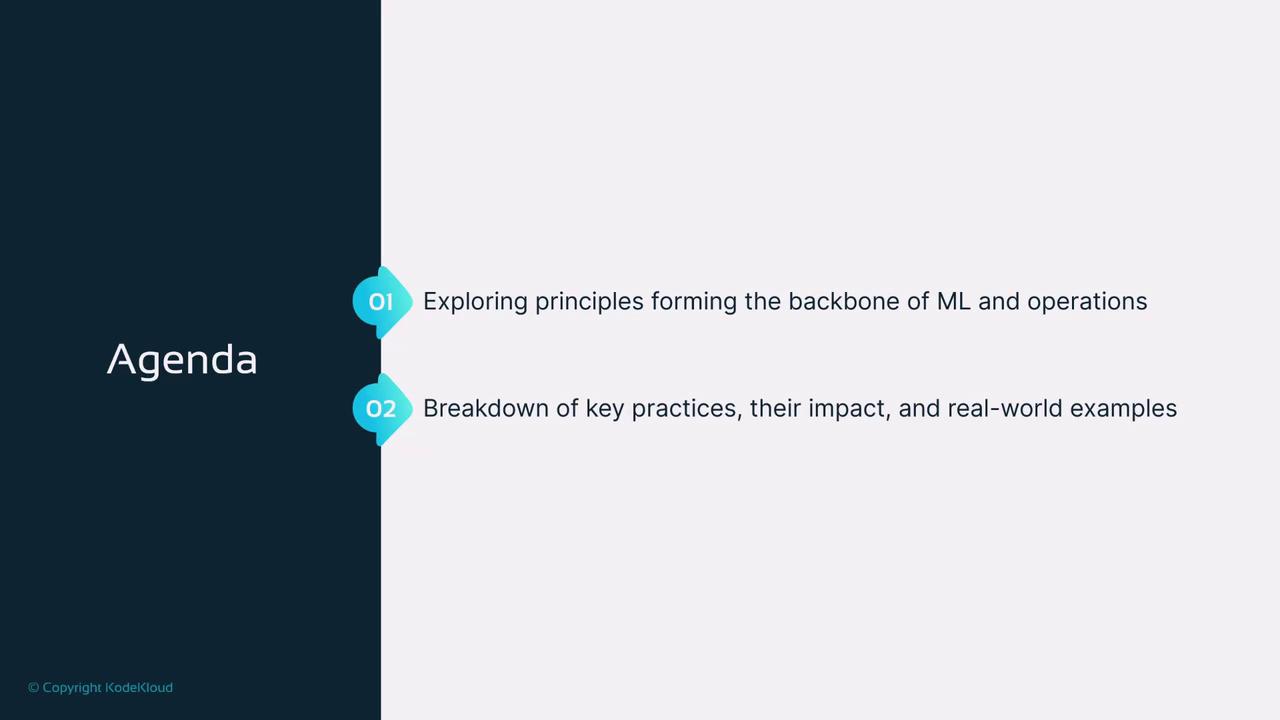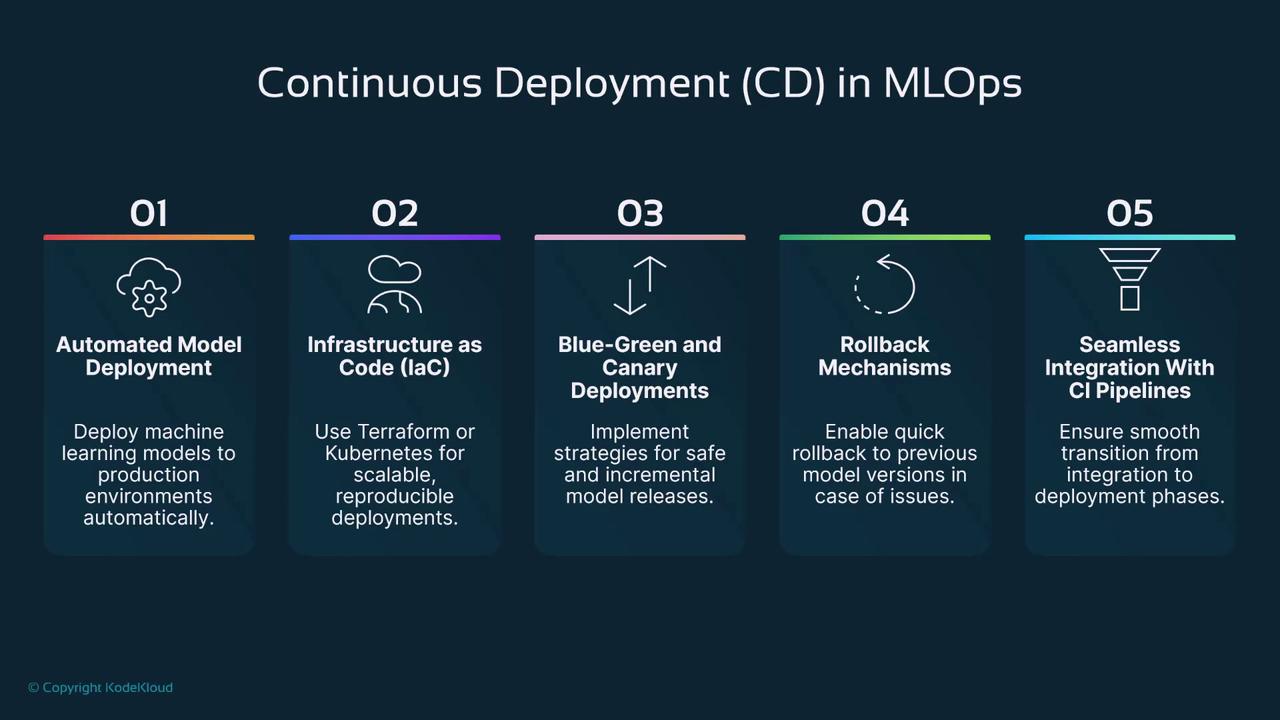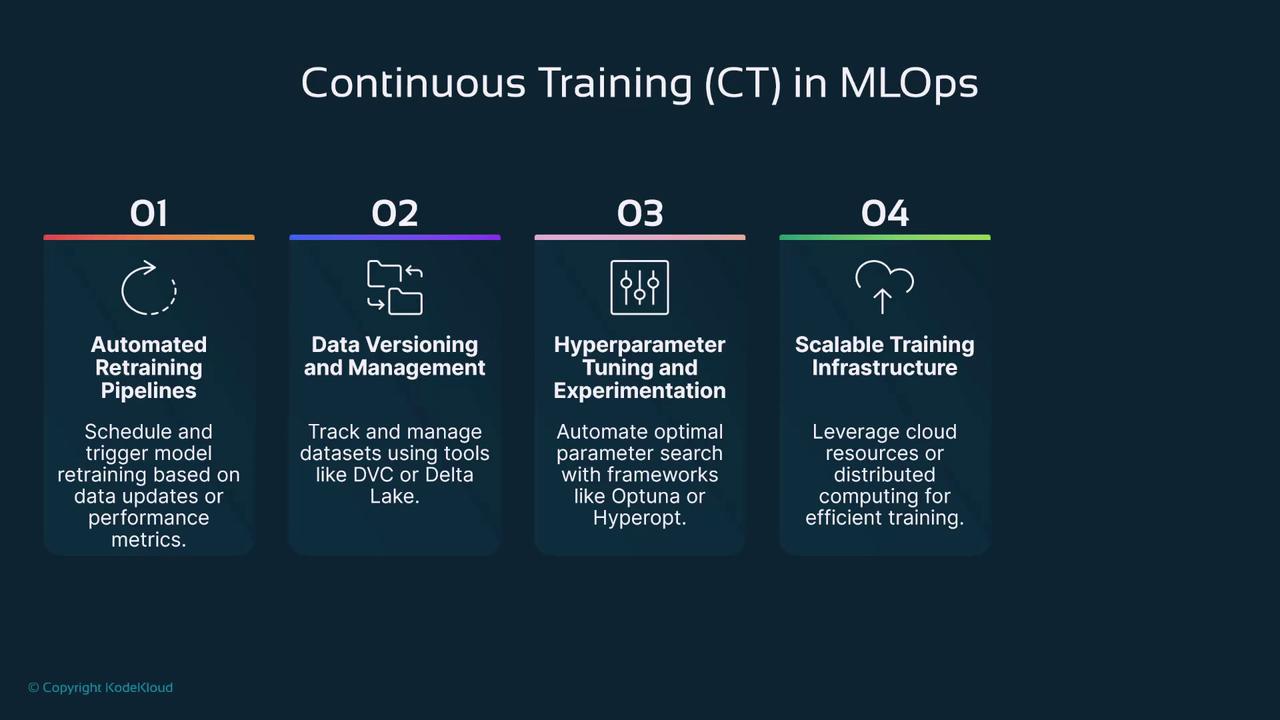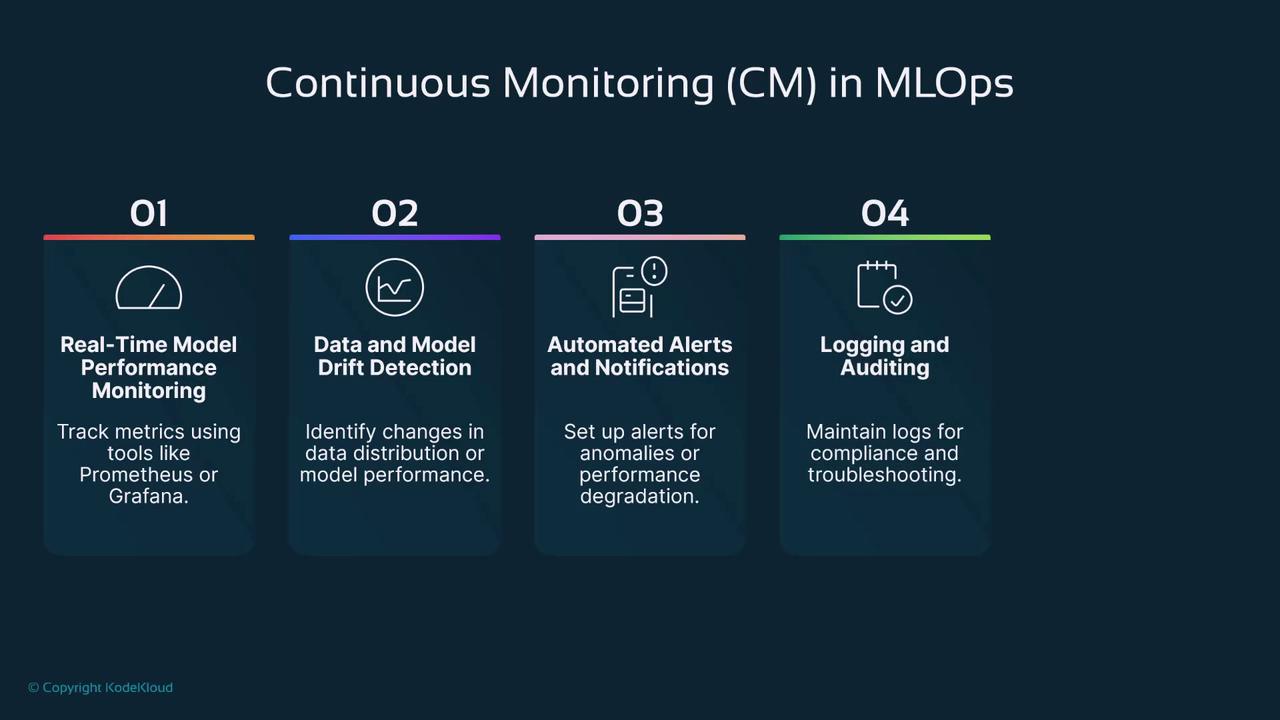Fundamentals of MLOps
Introduction to MLOps
Continuous Integration CI Continuous Deployment CD Continuous Training CT Continuous Monitoring CM
Welcome to this comprehensive guide on applying Continuous Integration, Continuous Deployment, Continuous Training, and Continuous Monitoring in MLOps. In this article, we dive into how these practices form the backbone of machine learning operations, enabling faster development cycles, efficient production deployments, and real-time model oversight. Each section breaks down key aspects along with practical examples and their impact in real-world applications.

Continuous Integration (CI) in MLOps
Continuous Integration (CI) plays a crucial role in ensuring that code, data, and machine learning models are seamlessly integrated into a shared repository. The key aspects of CI include:
- Automated Code and Model Integration: Automates the merging of code changes and model updates, reducing the risk of human error. For example, in a fraud detection system where multiple teams update the model concurrently, CI/CD tools manage merges efficiently.
- Version Control: Utilizing tools such as Git, DVC, and MLflow to track changes in code, data, and models enhances collaboration and experiment reproducibility.
- Automated Testing: Incorporate unit tests, integration tests, and validation tests across the ML pipeline to verify that every component functions correctly in varied environments.
- Build Reproducibility: Maintain consistent builds across different environments to prevent discrepancies during development and production.
- Enhanced Collaboration: Streamlined integration processes improve teamwork among data scientists, engineers, and stakeholders.

Note
Continuous Integration not only minimizes merge conflicts and code errors but also lays the foundation for robust and scalable production systems by ensuring each component is tested and validated thoroughly.
Continuous Deployment (CD)
Continuous Deployment (CD) focuses on the efficient and safe release of machine learning models into production environments. Its essential components include:
- Automated Model Deployment: Automatically deploy models to production so that updated models are readily available. For instance, a recommendation engine for an e-commerce platform can instantly serve new suggestions as data updates arrive.
- Infrastructure as Code: Use tools like Terraform and Kubernetes to define and provision deployment infrastructures, ensuring scalability and consistency.
- Blue-Green and Canary Deployments: Implement incremental releases with minimal downtime, thereby reducing risks during updates.
- Rollback Mechanisms: Quickly revert to previous stable versions in case issues occur during deployment.
- Seamless Integration with CI: CD works in tandem with CI pipelines to provide a smooth transition from code integration into production.

Note
Implementing blue-green or canary deployments can dramatically reduce the risk of exposing production systems to untested changes, ensuring a smooth user experience.
Continuous Training (CT)
Continuous Training (CT) focuses on keeping machine learning models up-to-date by retraining them as new data becomes available. This approach comprises the following components:
- Automated Retraining Pipelines: Schedule and trigger model retraining processes based on new data or shifts in performance metrics. For example, a weather prediction model constantly refreshes its learning as fresh meteorological data streams in.
- Data Versioning and Management: Leverage tools like DVC and Delta Lake to monitor changes in the dataset and manage them efficiently.
- Hyperparameter Tuning and Experimentation: Optimize model performance by experimenting with different hyperparameters.
- Scalable Training Infrastructure: Utilize cloud services or distributed computing frameworks to support large-scale model training.
- Model Validation and Testing: Ensure models meet predefined quality and performance benchmarks before deployment.

Warning
Ensure that your retraining pipeline includes robust validation procedures to avoid deploying models that could negatively impact production performance.
Continuous Monitoring (CM)
Continuous Monitoring is key to ensuring that deployed machine learning models perform reliably in real-time. The monitoring process involves:
- Real-Time Monitoring: Deploy tools such as Prometheus and Grafana to continuously track performance metrics like accuracy and latency.
- Data and Model Drift Detection: Monitor for changes in data distribution or unexpected shifts in model predictions, which can indicate performance issues.
- Automated Alerts and Notifications: Set up systems that alert teams to anomalies or degradations in performance, ensuring prompt response to potential issues.
- Logging and Auditing: Maintain comprehensive logs for troubleshooting and compliance purposes.
- Feedback Loops: Implement mechanisms that provide feedback from the monitoring system to continuously refine and improve model performance.

Summary
Each of the CI, CD, CT, and CM practices plays a unique and critical role in deploying and managing machine learning models effectively. Together, they empower data scientists and engineers to build, train, deploy, and monitor models more efficiently while ensuring reliability and performance at scale.

For more insights on MLOps best practices and deployment strategies, explore additional resources such as Kubernetes Documentation and Docker Hub.
Thank you for reading this article. We look forward to diving into more advanced topics in future lessons.
Watch Video
Watch video content